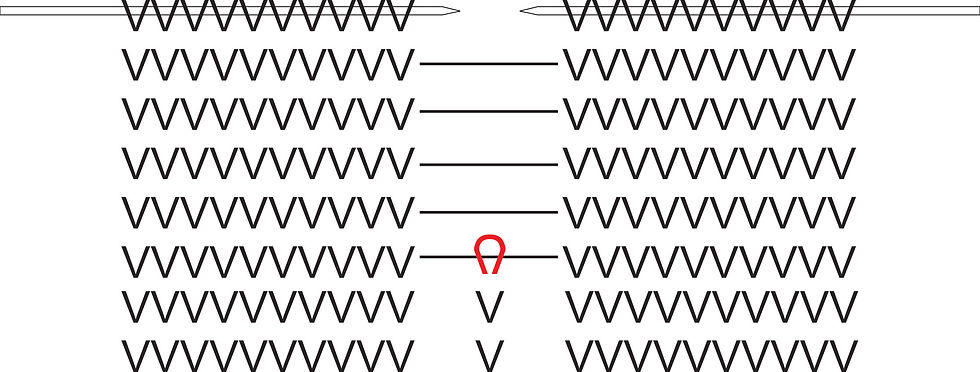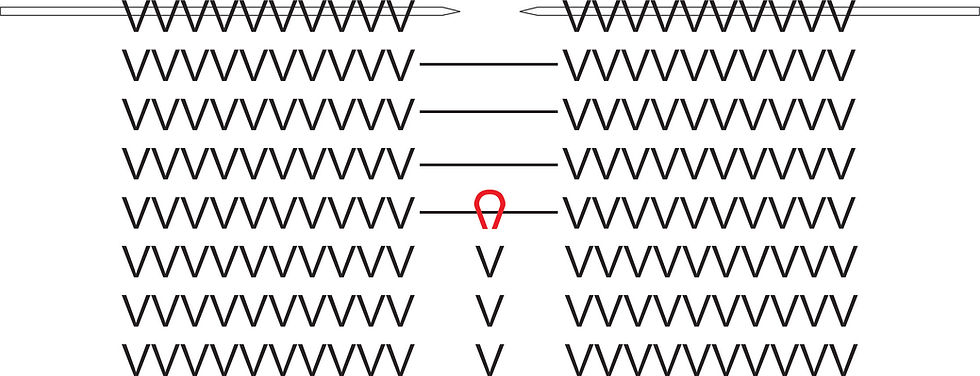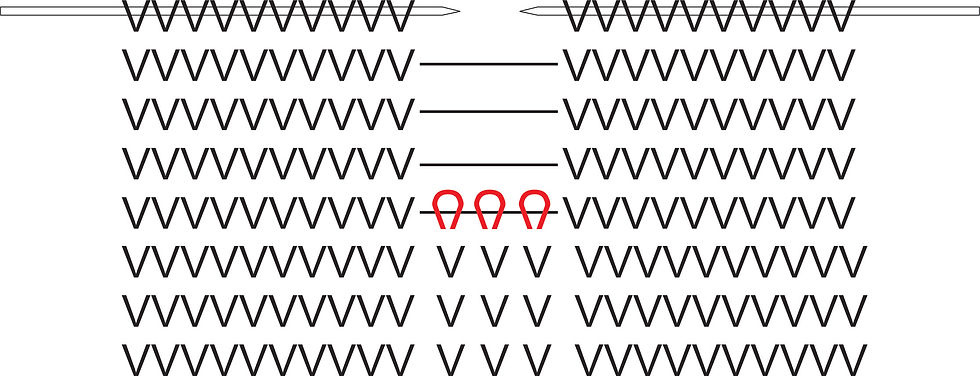Drop Everything!
- Ashley Lambert-Maberly
- Jul 23, 2018
- 5 min read
I'm about to write about something scary, so let's all calm down first of all. Here's a calming photo to get us in the mood:

(It's a view overhead at VanDusen Botanical Garden, of the leaves of the Albizia (Silk Tree) silhouetted against the sky).
I've been scared before. Hosting cocktail parties, producing original musicals, walking a dog who will occasionally lunge at passersby carrying bags he doesn't approve of (I can never tell which) ... my life is fraught with tension. Once, as a child, I went to my grandmother's home for dinner, where she had also invited an elderly couple who would go right up to you and look at your teeth (or so my mother claimed, when she insisted I brush them) ... that was frightening. But none of it holds a candle to the life-altering event at Madrona Fiber Arts Festival last year.
There I was, minding my own business, having a lovely conversation with others at the table, when the woman to my left noticed a flaw in the cowl I was knitting for my mother (she might have lied to me as a child to get me to perform basic hygiene tasks, but I will still knit for her). There was a twisted stitch* quite a few rows down. "Oh yes," I said, "I must have dropped it and put it back on the wrong way," and I tried not to betray my awe that a stranger could glance at my knitting, in dark charcoal grey (Mom chose the colour), and notice the tiny, tiny hint of a difference that indicated a twisted knit stitch from the normal ones. "It's fine," I added, because she seemed concerned.
"You don't want your Mom to have this mistake in her cowl," she insisted. "It's for your mother, it should be perfect. Now, don't panic," she added, and it was at that point she pulled my needles apart, dropped a stitch, and began unravelling my knitting.
Once the paramedics had finished and I was breathing again, I took a look at what she had done, and it turns out it wasn't so scary after all. In fact, I learned a valuable lesson and use it all the time, and will now share it with you.
Intentional Stitch Dropping
What is "dropping a stitch" anyway? It's when you let a loop (i.e. stitch) off of your needle. If your yarn is sticky, you will now have a loop sticking up from among other bits of yarn, either purls or knits, from the prior round. If your yarn is smooth, it may start to drift down a bit and cause some concern. Believe-it-or-not, most yarn is sticky enough that the loop just sits there. If you don't panic and start tugging, there it will stay.
What doesn't happen: your entire project will not unravel. Even if you let that dropped stitch descend, row after row after row, all the stitches to your left and right will remain in place and secure.
S0 why do this? Just as my new friend was showing me, you can drop a stitch, and keep dropping it, until you get to a stitch you messed up. Maybe it's a knit instead of a purl, for instance. Now you can fix it!
When your dropped stitch is in the right place (i.e. you've just dropped it past the naughty row), if you're a scaredy-cat you can temporarily secure it with a cable needle, spare DPN, or locking stitch marker, and go have a fortifying drink before the next step. Or, if it looks unlikely to move, then just leave it, since we're about to fix it now.
Here's what you have:

So this represents rows of stockinette stitch, and you've dropped a stitch down to the 3rd row. Behind this stitch is a small section of yarn, travelling from the stitches on the right needle to the ones on the left. This is the yarn you originally knit (or purled) your stitch with. And you can do it again, now, even though the yarn's not loose and floppy and connected to a ball like you're used to. Simply insert a needle through your dropped stitch, grab that straight section of yarn, and pull it through.
(Note: some people use a crochet hook and just tug it through. If you like using tools that make things ridiculously easy, go for it).
Voila! You will have re-knit that stitch. You now have this:

It's moved up a row, yippee! Simply keep this up until you are back at the top, and then carry on with knitting the cowl for your Mom (or whatever your project is), secure in the knowledge that a tiny mistake she would never in a million years have noticed because of (a) cowl, (b) folds, (c), charcoal, has been fixed.
Unintentional Stitch Dropping
Sometimes you discover an accidentally-dropped stitch from earlier in your knitting (I find this often happens to me about 12 rounds after I was forced to "make one" because my stitch count was unexpectedly off). Lucky for you, our intentional stitch dropping can still come to the rescue.
This is going to be the teensiest bit different from the last exercise, because when we intentionally dropped a stitch, we had straightforward bands of yarn to re-knit it with. If we unintentionally drop a stitch, there is no knitting-with yarn to be had. What do we do?
Easy. Intentionally drop a stitch from the columns both before and after the unintentionally-dropped stitch. Now you will have something you can work with. True, it'll be a tad tight, but it'll work, and everyone swears that after blocking it'll all settle down and no one will notice.

You're welcome!
On and Off The Needles (in one week, no less!)
(I will mark with a ! those projects that have advanced, and !! those projects that are new to the blog.)
!!Decorative Knitted Iris Flower by Svetlana Gordon
On The Needles
!Lerro, by Lee Meredith (finished the 2nd diamond in Section One)
!Sophie's Universe crochet project (Part 7: Round 54)
!GGN Norwegian Ski Sweater (adding the steek stiches and knitting from eventual armhole to neck)
!Persian Dreams Blanket (row 31 of the third hexagon)
!Sweater Sample (from the Sweater Workshop, final stockinette section)
!!Poison Oak by Natalia Moreva
A Church Mouse sock (4.5" through the 5.5" of the foot prior to decreasing to toe)
Glossary
*twisted stitch = a stitch which has been turned 180 degrees upon arrival on one's right needle. Sometimes this is done intentionally to make for a tighter, firmer fabric, but is often achieved in error by an unconventional knitting technique, or by dropping stitches and picking them up and replacing them incorrectly.






Comments